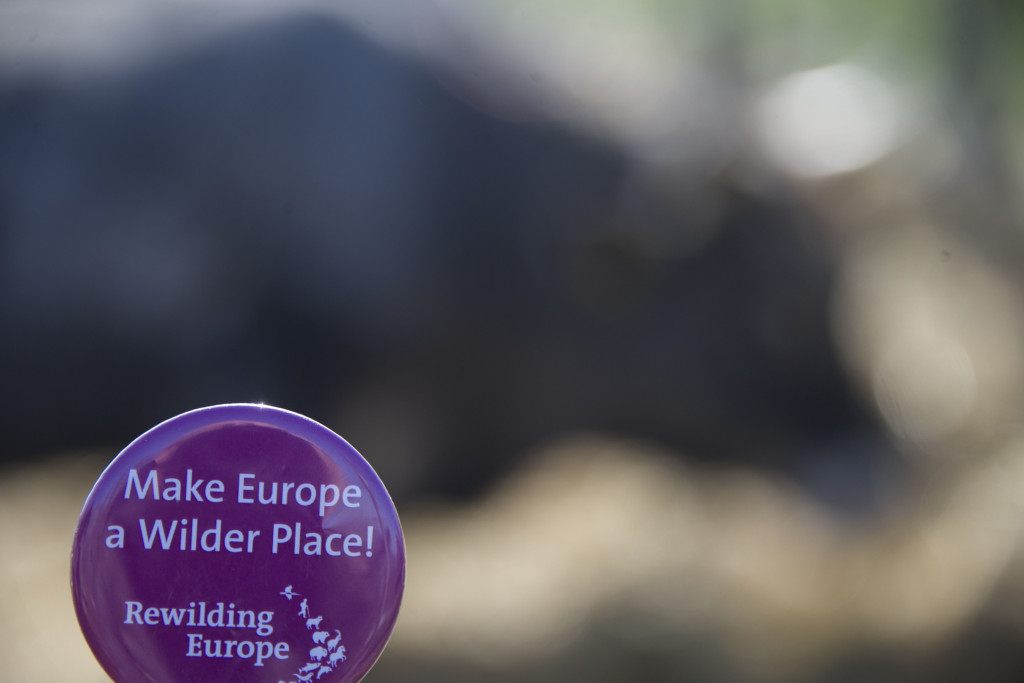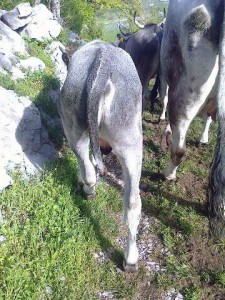Anyone who has seen the film ‘Dances with wolves’ with Kevin Costner could easily get the false impression that wolves are cosy animals that you can even hug or dance with. Our young Boskarin bull, recently released in a small herd in the wild Velebit mountains in Croatia knows differently by now.

He recently had his first encounter with wolves, he survived the battle and I am proud of him. Just a bit more than one year old, he already stood his ground, although it cost him a piece of his tail. What the skirmish might have cost the wolves we don’t know. Maybe a fractured rib, a crack in the skull or a limp.
Using their wild instincts, rewilded cattle will learn both individually and as herds about how to survive the presence of large predators. This is also one side of rewilding. It is also one of the reasons why aurochs were big and swift animals. The bigger you are, the better your chances for survival, especially when you are young.

It also leads me to a discussion I had with the herd managers of the Tauros breeding herds in the rewilding areas of Faia Brava in Portugal and Campanarios in Spain. The topic was: what is real, wild cattle-behaviour like? While visiting the more or less freely roaming herds of Maronesa cattle in Faia Brava and the herd of Sayaguesas in Campanarios, I observed that both herds had a flight distance – towards humans on foot – of at least 300 meters. The question that came to mind was: Is this the wild behaviour or just scared behaviour? I opt for the latter. In my opinion a herd of wild cattle need not go on the run immediately once they see humans, unless they have had negative associations, such as being hunted, scared or treated in a stressful way. Of course we haven’t yet got a good reference for what truly wild cattle behaviour is like, since nearly every cattle herd in Europe is pretty much managed in some way. So, depending on the way they have been treated when handled – they might develop flight behaviour when meeting humans. But what was the original aurochs behaviour like? There is an interesting old story written down by someone who witnessed wild behaviour of one of the last aurochs-herds alive. The Polish/German ‘biologist’ Schneeberger, wrote in the early 1600s:
“An aurochs is not afraid of a man and will not flight when someone comes near, he hardly retreats, when someone comes slowly towards him. And if someone tries to do screaming or throwing something this does not scare the animal the least. He will remain firm in his place as if he were laughing at the man to his attempt. When the animal stands on the road, one should go around it, even when sitting on a car, because he will not go off the road. When they are challenged, they are temperate, but if he who has challenged him will stretch out on the ground, nothing bad will happen because they save those who lie stretched, like lions, with a strange gentleness. If a person will not stop challenging however, they will attack him with the horns and throw him thus in height.”
So this is probably what really wild behaviour of aurochs looked like: self-confident, knowing that you can defend yourself, not being scared and not running away already at a large distance. A topic to discuss within the rewilding teams is: How are we going to treat our cattle in the process of de-domestication so that they will become self-confident? In my opinion our young Boskarin bull might be an example. Grown up on the farm, so not scared of people, but at the same time able to defend himself against wolves.
